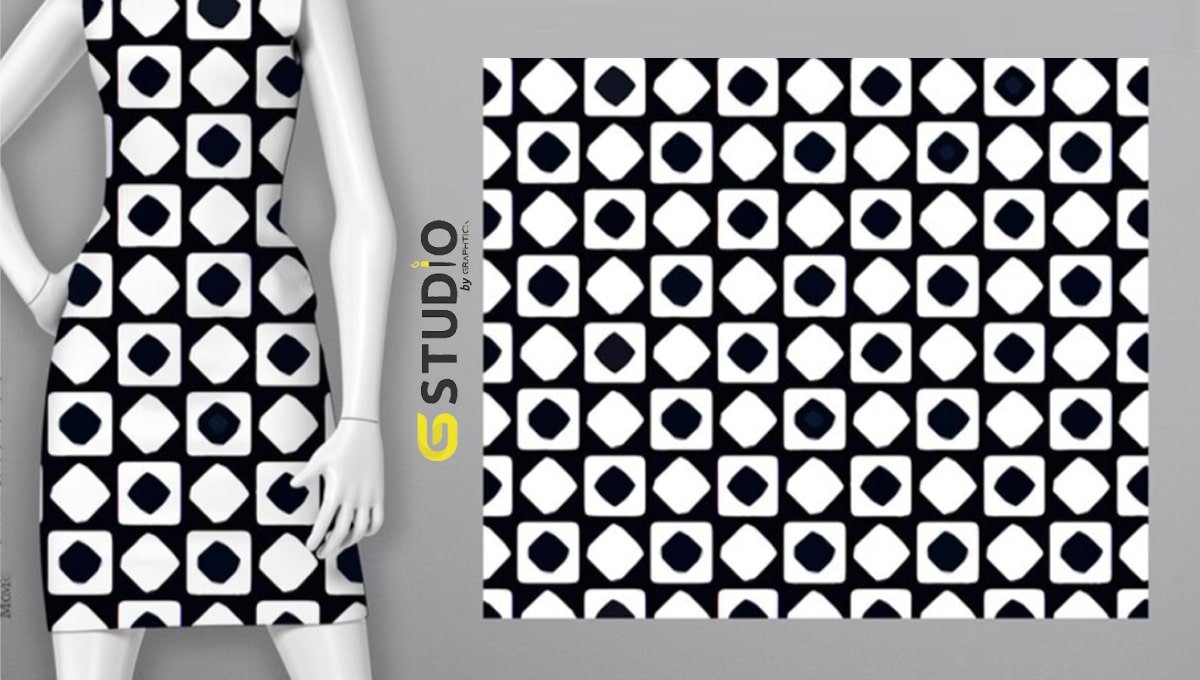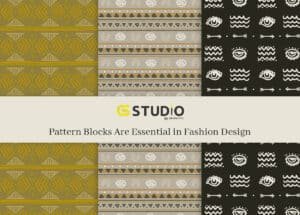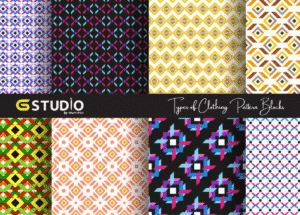
Understanding Clothing Pattern Blocks
In the world of fashion planning, inventiveness is as effective as the tools used to bring it to life. One of the most essential—but regularly overlooked—tools in attire improvement is the clothing design square. Whether you’re designing a high-fashion garment, a ready-to-wear collection, or a custom-fit furnish, your travel starts with a well-drafted design block.
At Studio Graphtick, we accept that Clothing Pattern Blocks lead to more grounded designs, superior garment fit, and smoother production workflows. In this article, we’ll jump into what a clothing design piece is, why it things, and how to utilize it effectively in your design prepare.
What is a Clothing Pattern Block?
A design block, also known as a sloper or ace block, is a fundamental, fitted design with no fashion lines, creases, or design highlights. It speaks to the center structure of a garment—typically drafted to fit standard body estimations or a brand’s measuring guide.
Blocks can be created for distinctive garment sorts (e.g., bodice, skirt, pants, sleeves) and are utilized as a starting point to create custom garment designs. Think of it as the foundation upon which all your fashion thoughts are built.
There are typically two sorts of design blocks:
- Basic Block (Sloper): Fitted, with no crease stipends, darts as it were where necessary.
- Production Block: Incorporates crease stipends and is prepared to be utilized in generation workflows.
Why Pattern Blocks Are Essential in Fashion Design

At first look, a clothing pattern square may see plain—but its simplicity is what makes it so effective. Here’s why each design originator ought to get it and utilize design blocks:
-
Consistency in Fit
Using a standardized block guarantees that all your garments fit reliably over diverse designs and collections. This is vital for keeping up your brand’s fit identity.
-
Time Efficiency
Once your base pieces are culminated, they can be reused and adjusted endlessly, speeding up the design and improvement process.
-
Accuracy in Design
Blocks diminish mystery when drafting new designs. You, as of now, know how the square fits, so any changes you make are unsurprising and controlled.
-
Improved Sampling and Production
When your base designs are exact, you decrease the chance of examining errors, fit issues, and production delays.
Types of Clothing Pattern Blocks

Each garment category has its possess foundational piece. Here are the most commonly utilized ones:
-
Bodice Block
Used for tops, dresses, coats, and more. The bodice piece incorporates darts and speaks to the upper body from the neck to the waist.
-
Skirt Block
A basic design for skirts, usually fitted with darts and finishing at the midriff and wanted sew length.
-
Pant Block
Includes midriff, hip, groin, and leg dimensions—ideal for pants, shorts, and leggings.
-
Sleeve Block
Used with bodice blocks to make brief, long, or molded sleeves.
-
Dress Block
A full-body square that combines bodice and skirt estimations into a single pattern.
These design squares shape the establishment of about each sort of garment design. Once you have your blocks created and tried, you can make unending plan varieties by including fashion lines, altering shapes, and joining trims.
How to Create a Clothing Pattern Blocks
Design blocks can be drafted physically or carefully. At studio.graphtick, we back both traditional and CAD-based design development. Here’s a step-by-step diagram of how to make your possess block:
Step 1: Gather Body Measurements
Use exact body measurements (your possess or based on a measure chart). Key ranges include:
- Bust, midsection, hip
- Shoulder width
- Arm length
- Back and front length
Step 2: Draft the Block (Manually or Digitally)
Use the measurements to draft a level design. You’ll regularly need:
- Paper or digital software
- Rulers, French bend, and hip bend (for manual drafting)
- A measuring framework or guide
Step 3: Cut and Sew a Muslin (Toile)
This is a harsh prototype using a cheap texture to test the fit of your block.
Step 4: Make Fitting Adjustments
Fit the muslin on a dress frame or model and alter the design accordingly.
Step 5: Finalize the Block
Once idealized, spare the square as your ace duplicate. You’ll utilize this to make all your new designs.
Pattern Blocks vs. Patterns: What’s the Difference?
A pattern block is the starting point. It contains no style elements—just the raw fit and proportions. A pattern, on the other hand, is a stylized version of the block that includes:
- Style lines (e.g., princess seams, pleats)
- Design features (e.g., collars, pockets, flares)
- Construction details (e.g., seam allowances, notches)
You transform a block into a pattern by applying these design elements.
Digital Pattern Blocks: The Future of Fashion
The rise of fashion tech has brought pattern blocks into the digital age. At studio.graphtick, we help brands and designers move their blocks from paper to software, enabling:

- Easy edits and version control
- Faster prototyping
- Remote collaboration with pattern makers and manufacturers
- Seamless integration with 3D sampling tools
If you’re working with multiple styles or plan to scale production, digital pattern blocks save time, increase precision, and future-proof your workflow.
Why Studio Graphtick Recommends Starting with Blocks
We’ve worked with dozens of independent designers and startup brands—and we’ve seen a common trend: skipping the block phase leads to long-term issues. Poorly fitted garments, expensive resampling, and inconsistent sizing are all avoidable with strong foundational blocks.
At studio.graphtick, we offer:
- Custom Pattern Block Development
- Digital Conversion of Manual Blocks
- Pattern Grading Services
- Pattern Block Libraries for Standard Sizes
Our goal is to help you build a fashion brand with strong technical foundations—because great design is more than just creativity. It’s about precision, repeatability, and fit.
Conclusion: Build Better Fashion with Clothing Pattern Blocks
An awesome garment begins long time recently the to begin with, stitch—it starts with a mindfully constructed design square. Design squares are not fair layouts; they are devices of exactness, consistency, and imaginative opportunity. Whether you’re making a custom-fit jacket or scaling a streetwear collection, the quality of your last garment depends on the astuteness of the square it’s based on.
When you begin with a strong design block, you dispose of mystery. You know your base estimations are precise. You know your extents are adjusted. You know how your garment will carry on the body. This establishment permits you to certainly investigate plan varieties, try with outlines, and include complex development details—without stressing almost whether the piece of clothing will really fit.
Beyond design, design pieces are instrumental in the specialized and generation side of fashion. A well-developed square abbreviates your inspecting timeline, decreases squander from re-dos, and spares money over the development process. In large-scale generation, it can create the contrast between an item that fits all sizes, or one that racks up return rates due to inconsistency.
As the design industry becomes more computerized and data-driven, acing your set of design squares will give you a competitive edge. You’ll be able to model speedier, collaborate more effectively with producers, and adjust to patterns or client requests in real time. For feasible brands, design squares moreover decrease fabric squander by anticipating overproduction of imperfect samples—a little but vital step toward sustainable manufacturing.
At studio.graphtick, we accept that each architect merits getting to clean, accurate, and professionally created design blocks—regardless of the estimate of their name or involvement level. That’s why we offer services custom-fitted to small businesses, new businesses, and free entrepreneurs who need to do things the right way from the beginning.
Whether you need to make your to begin with set of squares or digitize a library of designs for generation, we can offer assistance to you:
- Draft and fit custom blocks from scratch
- Convert paper squares into advanced files
- Create multi-size reviewing sets
- Develop reusable base designs for whole item lines
Remember, inventiveness in fashion is limitless—but it needs structure to prosper. A clothing design square is that structure. It’s the bridge between your thoughts and your item, and the establishment for fit, work, and long-term brand character.
Ready to level up your design process?
Start with Clothing Pattern Blocks. Visit studio.graphtick today and see how we can help bring your vision to life with precision.
FAQs About Clothing Pattern Blocks
What’s the difference between a block and a sloper?
They’re essentially the same thing. “Sloper” is often used in the U.S., while “block” is more common in the UK and Australia. Both refer to the basic, unstyled pattern used to develop designs.
Do I need a block for every design?
Not necessarily—but using a block speeds up the process and improves consistency. You can use one block to develop many different designs by modifying style lines and details.
Can I buy ready-made pattern blocks?
Yes! Many design studios and platforms (including Studio Graphtick) offer ready-made blocks in standard sizes. These can be used as-is or customized to your measurements.
How do I grade a pattern block?
Grading involves resizing a pattern block to fit different sizes. This can be done manually using grading rules or with CAD software. We offer grading services if you want to scale your blocks for production.
Is digital pattern making better than manual?
Digital has advantages in speed, accuracy, and scalability, especially for teams or production-based businesses. But many designers still start manually, especially when learning. At Studio Graphtick, we support both.
How many types of blocks should I have?
At a minimum, it’s smart to have:
- One bodice block (for tops/dresses)
- One skirt block
- One pant block
- One sleeve block
You can expand as needed based on your collection type.

0 comments